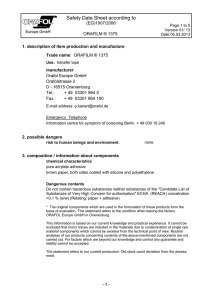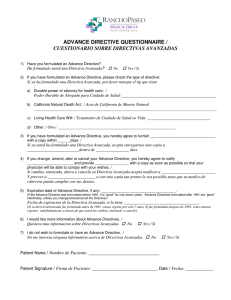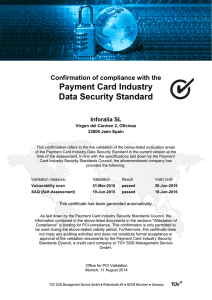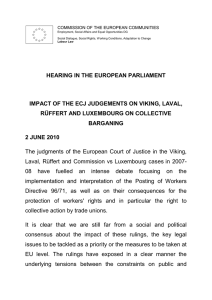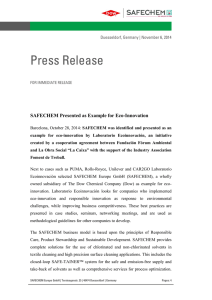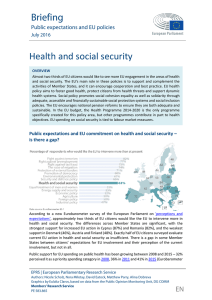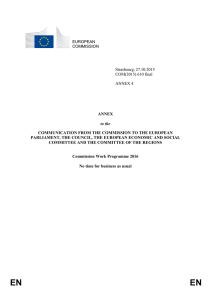energy efficiency in Germany
Anuncio
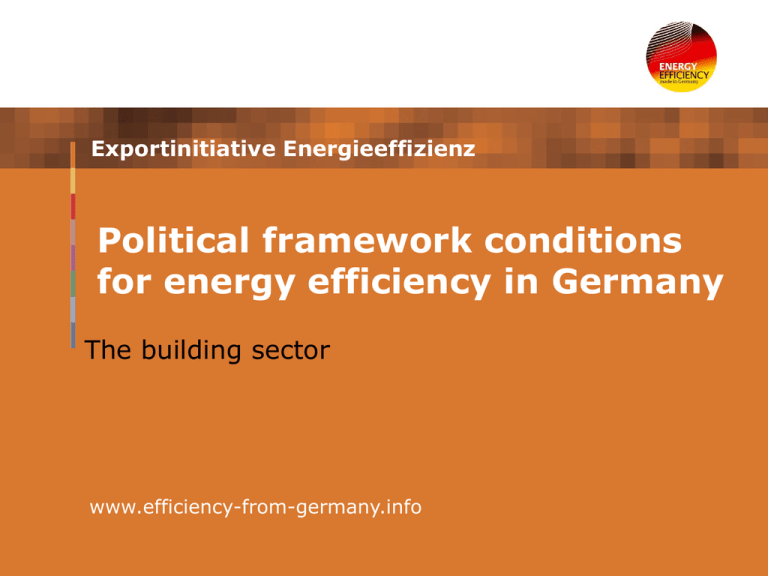
Exportinitiative Energieeffizienz Political framework conditions for energy efficiency in Germany The building sector www.efficiency-from-germany.info Presentation content Introduction: energy efficiency in Germany Energy efficiency targets and related policies in EU and Germany Outlook on further energy efficiency stimulating policy instruments in EU and Germany 2 Exportinitiative Energieeffizienz Introduction: energy efficiency in Germany (historically) www.efficiency-from-germany.info Introduction: energy efficiency in Germany Energy consumption in Germany is structurally high, as It has been highly industrialised for decades It is a densely populated country Availability of fossil energy resources is limited / expensive (deep coal mining) => Energy has always been comparatively scarce / expensive => High vulnerability from oil price shocks of the 1970s Since mid 1970s: Regulatory measures defining efficiency standards were implemented not one major legal framework but a multitude of energy savings approaches, mainly in building and industrial sectors 4 Introduction: energy efficiency in Germany German industrial sectors and suppliers, a.o. mechanical engineering, are highly specialized High engineering standards + need for rational use of energy = high level of energy efficiency In early 1990s decoupling of GDP growth and energy consumption: energy productivity 1990-2008 raises by 40.7% Primary energy consumption of less than 7 GJ per €1000 of GDP makes Germany one of the most energy efficient industrialised countries 1990-2006: average improvement in specific energy consumption (energy intensity) of 1.7% p. a. based on national values Today, German industrial sectors provide a large number of high efficiency products and innovative approaches 5 Energy Productivity in Germany 1990 - 2008 6 Developement of German Building Code 7 Exportinitiative Energieeffizienz Energy efficiency targets and related policies in EU and Germany www.efficiency-from-germany.info The role of EU legislation Since mid 1990s, EU legislation regarding energy efficiency has become binding for member states Defining energy efficiency targets National legislation has to be in line with / must implement EU policy standards (EPBD, EcoDesign Directive, Ban of inefficient lighting etc.) 9 EU: energy efficiency targets In 2007 European governments agreed on 2020 targets: 20% reduction of CO2 emissions in comparison with 1990 CO2 levels 20% of EU energy consumption from renewable sources 20% reduction of primary energy use compared to projected levels (reduction by means of improving energy efficiency) Energy Efficiency Action plan Reduce primary energy use in Europe by means of improving energy efficiency (Source: ec.europe.eu) 10 EU: policy used for stimulation energy efficiency European Performance Building Directive (EPBD) EU had a Directive for EE in buildings since 2002, the new Directive is a recast All new build “nearly zero energy buildings” as of end of 2020 (public sector: end of 2018). Remaining energy need mainly covered by RES Directive covers now all existing buildings irrespective of their size both residential and non residential sector (previously only >1000 m2) Publication in EU Official Journal in June 2010, has to be transposed by July 2012 in EU MS 11 EU: policy used for stimulation energy efficiency EcoDesign Directive Establishing a framework for the setting of ecodesign requirements for energy-using products (EuP) including energy efficiency requirements Entered into force on 11 August 2005 Energy use targeted All energy using products (except vehicles for transport) and covering all energy sources 12 EU: policy used for stimulation energy efficiency Ban of inefficient light bulbs (2009) S. European Commission 13 Germany: energy efficiency targets German environmental protection policy (in 2020) 40% reduction of GHG in comparison to 1990 (end of 2007 goal: -21.3%) 30% increase in renewable energy sources Doubling of energy productivity 1990 – 2020 (Source: NEEAP Germany 2007 and BMU, 2009) 14 Germany: policy instruments used to support energy efficiency German policy for energy efficiency: A mix of regulation, financial incentives and information For example: building codes, low interest loans, advice campaigns and research Source: NEAAP Germany 2007, www.dena.de, www.kfw.de 15 Germany: policy instruments used to support energy efficiency Conclusion Paradigm shift Not cheap energy leads to competitiveness. Technology development for energy efficiency ensures future competitiveness! Source: NEAAP Germany 2007, www.dena.de, www.kfw.de 16 Companies present at the event: ECA-Software GmbH Bäro GmbH & Co. KG Wacker Chemie AG ratiotherm Heizung + Solartechnik GmbH & Co. KG LTM GmbH/ MCSC-Marcus Schmid Consulting TRILUX GmbH & Co. KG Vossloh-Schwabe Deutschland GmbH 17 Exportinitiative Energieeffizienz Thank you for your attention! www.efficiency-from-germany.info
